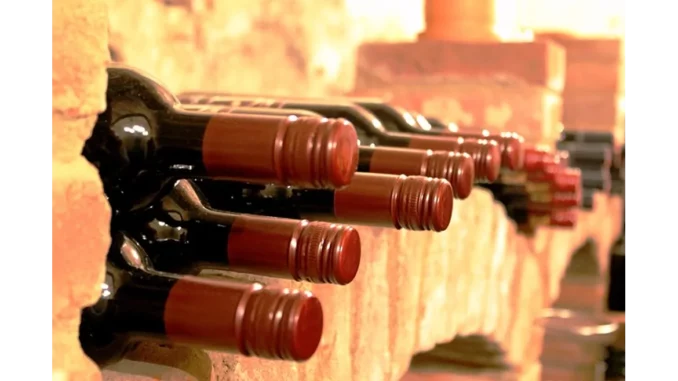
In the serene setting of a sun-dappled vineyard, I sat down with Lydia Parker, a seasoned wine enthusiast and self-taught connoisseur, to delve into the nuances of storing wine properly. Lydia’s passion for wine is evident in the way her eyes light up as she speaks about the delicate nuances of each bottle, each vintage. Her journey with wine began many years ago, and through trial and error, she has gained a wealth of knowledge about preserving wine’s quality and ensuring it ages well.
Our conversation started with a simple yet profound statement from Lydia, “Wine is a living thing, and the way you store it can either enhance its beauty or diminish its charm.” With this in mind, she began to unravel the intricacies of wine storage, offering advice that is both practical and insightful.
The Essence of Temperature Control
Lydia emphasised the critical importance of temperature in wine storage. “It’s like Goldilocks and the Three Bears,” she chuckled. “The temperature has to be just right.” She explained that both red and white wines prefer a cool, consistent environment, ideally between 10 to 15 degrees Celsius. “Fluctuations in temperature can cause the wine to expand and contract, which might lead to the cork being pushed out or air seeping in, both of which can ruin the wine,” she warned.
Her advice was clear – invest in a good wine cooler or cellar if possible. For those just beginning to build their collection, a dark, cool cupboard can suffice until more permanent solutions are found. Lydia’s own home boasts a modest cellar, where she carefully monitors conditions to ensure each bottle is stored perfectly.
Humidity: The Unsung Hero
While temperature is often at the forefront of wine storage discussions, Lydia was quick to highlight the role of humidity. “Humidity is the unsung hero of wine preservation,” she noted. Keeping the humidity level around 70% prevents the cork from drying out, which is crucial in maintaining an airtight seal. “A dry cork can lead to oxidation, and no one wants their prized Bordeaux tasting like vinegar,” she added with a knowing smile.
Lydia recommended using a hygrometer to monitor humidity levels and suggested simple solutions like placing a small dish of water in the storage area if the air gets too dry.
The Importance of Darkness
Light, especially sunlight, is another enemy of wine, Lydia pointed out. “Ultraviolet rays can degrade and prematurely age wine,” she explained. This is why wine bottles are often made of coloured glass, to protect the contents from light exposure. Lydia’s advice was to store wine in a dark place or to use a UV-protected wine cooler. “Think of your wine as a vampire,” she joked, “it thrives in the dark!”
Position Matters: Horizontal is Key
One of the most common mistakes Lydia encounters is the way people store their bottles. “Always store wine horizontally,” she advised. This keeps the wine in contact with the cork, preventing it from drying out. “It’s about maintaining that seal,” she reiterated, “which is essential for the wine to age gracefully.” For her own collection, Lydia uses simple wooden racks that cradle each bottle on its side, ensuring longevity and quality.
Avoiding Vibrations
“Wine is sensitive to vibrations,” Lydia cautioned. These can disturb the sediment in the bottle, especially in older wines, and affect the ageing process. She suggested keeping bottles away from appliances that create constant vibrations, like refrigerators or washing machines. In Lydia’s home, her wine cellar is tucked away from the hustle and bustle, a peaceful haven for her growing collection.
The Art of Patience
Perhaps one of the most valuable lessons Lydia imparted was the art of patience. “Wine is not just about immediate gratification,” she mused. “It’s about the journey, the anticipation, and the reward.” Proper storage allows wine to develop its flavours and aromas over time, transforming each bottle into a unique experience.
As our conversation drew to a close, Lydia left me with a final thought that resonated deeply. “Wine is a reflection of time and place,” she said. “By storing it well, you’re honouring the craft and the story behind each bottle.” Her words were a reminder that wine, when treated with respect and care, can offer not just a drink, but a moment in time preserved beautifully for the future.
In capturing Lydia’s insights, it becomes clear that storing wine is an art form in itself, one that requires a blend of knowledge, attention, and reverence. For those who cherish their favourite bottles, following these guidelines can ensure that each sip is as rich and rewarding as intended.
Elaine Cooper


Be the first to comment